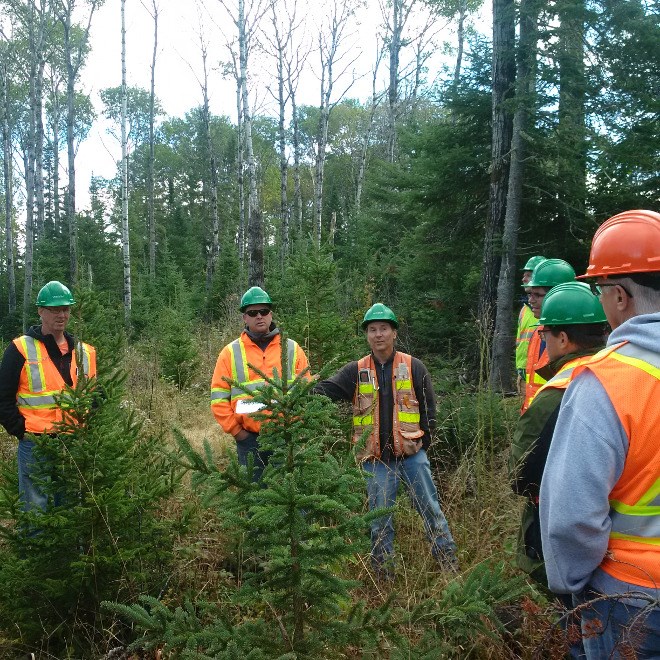The Ontario forest industry is hoping to find a middle ground as their exemption from Ontario’s Endangered Species Act nears expiration in mid-2018.
Planning forester Scott McPherson said even though the industry is exempt from ESA, the sector adheres to unique regulations for managing and caring for species at risk.
At Nipissing Forest Resource Management (NFRM) and the Vermilion Forest Management Company (VFM), for whom McPherson works, employees regularly work to ensure the safety of Blanding's Turtles in their Sudbury Forest operations.
They provide training to staff and have production restrictions in certain areas at certain times.
The companies undertake these initiatives under the Crown Forestry Sustainability Act (CFSA), under which Ontario foresters operates.
Other industries don't have comparable endangered species regulation.
In June 2018, the forestry industry's exemption from the Endangered Species Act (ESA) will expire, and foresters like McPherson are hoping for a resolution of the requirements of the ESA and the CFSA before then.
Ontario foresters have been managing forests under the CFSA since 1994, and when the ESA was introduced in 2007, the industry struggled to fulfill the requirements of both acts.
They were granted a five-year exemption in 2013 and the Ontario government committed to a harmonization of the two acts by 2018. That process is still underway.
Forest policy director Ian Dunn from the Ontario Forestry Industry Association, added that there are misconceptions about the exemption, and the forestry industry's responsibilities.
“It gives people the wrong impression, that we have a blanket exemption for managing species at risk, because we don't, and have managed species at risk for a long time and continue to do so.”
However, two environmental groups, Ontario Nature and Wildlands League, recently applied to appeal a 2013 Ontario Court of Appeal decision upholding exemptions to the act, including the forestry industry's.
The groups say the exemption fails to protect the 167 endangered or threatened species in the province against being killed or habitat destruction.
The disagreement highlights what Dunn said is the discrepancy in the mandates of the two acts.
Dunn described the CFSA as “a landmark piece of legislation.” Before, forests were managed primarily for timber, the CFSA took a more balanced approach integrating economic and cultural values like tourism and fishing.
In contrast, the ESA “presented a significant challenge, which is managing for single values across a landscape,” that single value being endangered species.
Foresters like McPherson are hoping for a solution similar to the exemption and are worried about the demands created by operating under two different acts.
If the exemption expired before harmonization and they had to operate under both acts again, he said it “would essentially create an additional layer of bureaucracy that would duplicate or even double the amount of work we have to do with the planning front.”
Christine Leduc, the director of public affairs at EACOM Timber Corporation, echoed Dunn and McPherson's sentiments.
“The CFSA emulates natural disturbances, the ESA triggers listings for individual listings for species...” said Leduc, which is hard “if you're trying to manage like a natural forest.”
Leduc said that the Ministry of Natural Resources and Forestry (MNRF) is taking the lead on the transition to a more feasible endangered species management solution, and has included industry representatives from companies like EACOM.
She said there is worry in the industry since there are potential implications for the wood supply and access to wood fiber if the decision isn't reached in time for the industry to adapt their management plans.
“We want to make sure that any harmonization is pragmatic,” said Leduc.
Dunn said that while 2018 may seem a long way off, it's important to figure out the issue as soon as possible.
“That sounds like it's kind of down the road, but this is a sector that manages up to 120 years into the future. (2018) is just around the corner, companies are writing forest management plans and need to know these answers soon.”




